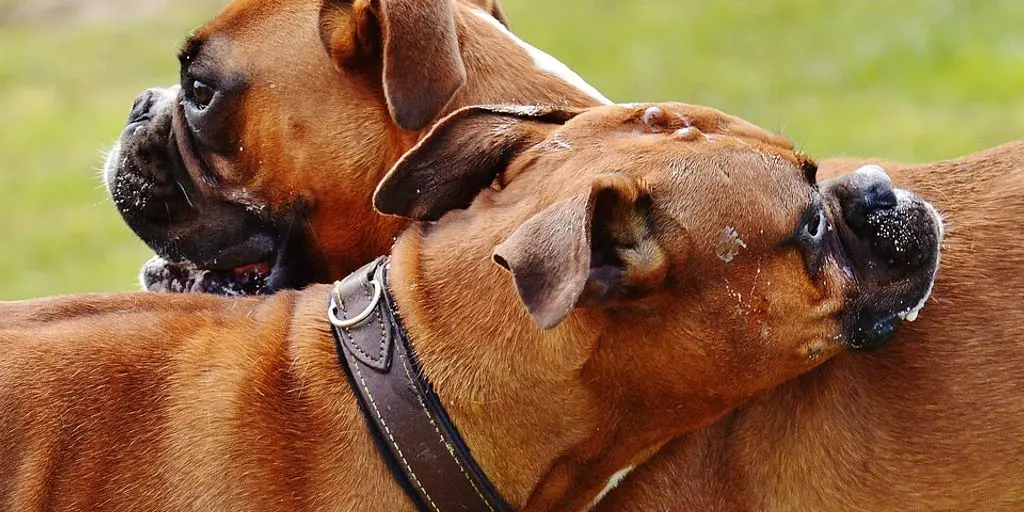Choosing the right collar for your dog is crucial for ensuring their comfort and safety. A properly fitted collar can prevent a host of issues, from discomfort to potential injury. In this comprehensive guide, we will explore how tight a dog’s collar should be, the importance of a proper fit, and tips for measuring and adjusting collars. Whether you’re a new dog owner or an experienced pet parent, this guide will help you make informed decisions about your dog’s collar.
Key Takeaways
- A well-fitted collar is essential for your dog’s safety and comfort.
- The two-finger rule is a reliable method for ensuring the collar is not too tight or too loose.
- Different types of collars, such as flat collars and martingale collars, require specific fitting techniques.
- Regularly check and adjust your dog’s collar to accommodate growth or changes in activity levels.
- Be aware of signs of discomfort or injury from the collar, such as redness, hair loss, or behavioral changes.
Understanding the Importance of a Properly Fitted Collar
When it comes to our furry friends, ensuring they have a properly fitted collar is crucial. A well-fitted collar is key to your dog’s comfort, safety, and overall well-being. Let’s dive into why this is so important.
Why Collar Fit Matters
A collar that fits just right ensures your dog is comfortable and secure. It shouldn’t be too tight, causing chafing or discomfort, nor too loose, risking them slipping out of it. Finding the right balance is essential.
Potential Risks of an Ill-Fitting Collar
An ill-fitting collar can lead to several issues:
- Chafing and skin irritation: A tight collar can cause these problems, making your dog uncomfortable.
- Breathing restrictions: If the collar is too tight, it can restrict your dog’s breathing, which is dangerous.
- Escape risks: A loose collar can easily slip off, increasing the risk of your dog running away or getting lost.
Benefits of a Well-Fitted Collar
A well-fitted collar offers numerous benefits:
- Comfort: Your dog will be more comfortable and less likely to experience skin issues.
- Safety: A properly fitted collar ensures your dog is secure and less likely to escape.
- Control: It provides better control during walks and other activities, especially when using a prong collar or other training tools.
Remember, a well-fitted collar is not just about comfort; it’s about ensuring your dog’s safety and happiness. Always check the fit regularly, especially if your dog is still growing or if you use different collars for various activities like training or outdoor adventures.
How to Measure Your Dog’s Neck for a Collar

Measuring your dog’s neck for a collar is a straightforward process, but it’s essential to get it right to ensure your dog’s comfort and safety. Here’s how you can do it:
Tools You’ll Need
First things first, you’ll need a few tools to get an accurate measurement:
- A flexible measuring tape
- A piece of string (if you don’t have a measuring tape)
- A ruler (if you’re using string)
- A pencil and paper to jot down measurements
Step-by-Step Measuring Guide
- Start by measuring your dog’s neck. You can use a flexible tape measure to get an accurate measurement. Place the tape measure around the neck, being careful not to pull too tight. Write down the measurement in inches or centimeters.
- If you’re using a piece of string, wrap it around your dog’s neck where the collar will sit. Mark the point where the string meets, then measure the length with a ruler.
- Place two fingers between the measuring tape and their neck, making the measurement around one to two inches looser. This ensures the collar will be snug but not too tight.
- Record this measurement using a pencil and paper. This will be the size you look for when shopping for a collar.
Common Mistakes to Avoid
- Not adding extra space: Always remember to add that one to two inches of extra space to ensure the collar isn’t too tight.
- Using a rigid measuring tool: A flexible measuring tape or string is crucial for getting an accurate measurement.
- Measuring too high or too low: Make sure you’re measuring the part of the neck where the collar will actually sit, usually the base of the neck.
Getting the right measurement is crucial for your dog’s comfort and safety. A well-fitted collar can make all the difference in your dog’s daily life.
The Two-Finger Rule: What It Is and Why It Works

The two-finger rule is a simple yet effective way to ensure your dog’s collar fits just right. Dog collars shouldn’t be too tight or too loose—ever heard of the two-finger rule? This rule helps you find that sweet spot easily.
How to Apply the Two-Finger Rule
To apply the two-finger rule, place two fingers beneath the collar while it’s on your dog’s neck. If your fingers fit comfortably, the collar is just right. If you struggle to fit your fingers, it’s time to size up.
Adjusting the Collar Based on Your Dog’s Size
Different dogs have different needs. For smaller breeds, you might need to be extra cautious to ensure the collar isn’t too tight. For larger breeds, make sure the collar isn’t too loose, as it could slip off.
Signs the Collar is Too Tight or Too Loose
- If the collar moves with resistance, it might be too tight.
- If you can pull the collar over the dog’s head, it’s too loose.
Always remember, a well-fitted collar is crucial for your dog’s comfort and safety.
Different Types of Dog Collars and Their Fits
When it comes to dog collars, one size does not fit all. Just as dogs come in all shapes and sizes, so do the collars designed for them. The ideal collar will ultimately depend on your unique dog and their preferences. Below, we’ve included the key factors to consider before purchasing a new one.
Adjusting Your Dog’s Collar for Different Activities
When it comes to everyday wear, your dog’s collar should be comfortable yet secure. A properly fitted collar ensures that your dog is safe and happy during daily activities. For everyday use, I recommend a flat collar or a dog harness, especially for smaller breeds or those with respiratory issues. Make sure to check the fit regularly, especially if your dog is still growing or has fluctuating fur thickness.
Training sessions often require a different approach. For effective dog training, consistency and patience are key. Depending on your dog’s behavior and training needs, you might opt for pitbull training collars or small dog bark collars. These specialized collars can help correct unwanted behaviors but should be used responsibly. Always follow the manufacturer’s guidelines and consult a professional trainer if you’re unsure.
Outdoor adventures call for a more durable and adjustable collar. If you’re planning a hike or a day at the beach, consider a collar made from durable materials that can withstand wear and tear. For added safety, a wireless dog fence can be a great investment to keep your dog within a safe perimeter. Remember, the collar should be snug but not too tight to avoid any discomfort or injury.
It’s time to evaluate your dog’s current collar. Take a moment to consider if it truly suits their needs.
Everyday Wear
When it comes to everyday wear, your dog’s collar should be comfortable yet secure. A properly fitted collar ensures that your dog is safe and happy during daily activities. For everyday use, I recommend a flat collar or a dog harness, especially for smaller breeds or those with respiratory issues. Make sure to check the fit regularly, especially if your dog is still growing or has fluctuating fur thickness.
Training Sessions
Training sessions often require a different approach. For effective dog training, consistency and patience are key. Depending on your dog’s behavior and training needs, you might opt for pitbull training collars or small dog bark collars. These specialized collars can help correct unwanted behaviors but should be used responsibly. Always follow the manufacturer’s guidelines and consult a professional trainer if you’re unsure.
Outdoor Adventures
Outdoor adventures call for a more durable and adjustable collar. If you’re planning a hike or a day at the beach, consider a collar made from durable materials that can withstand wear and tear. For added safety, a wireless dog fence can be a great investment to keep your dog within a safe perimeter. Remember, the collar should be snug but not too tight to avoid any discomfort or injury.
It’s time to evaluate your dog’s current collar. Take a moment to consider if it truly suits their needs.
Recognizing Signs of Discomfort or Injury from a Collar
Physical Signs to Watch For
The first and most obvious sign is if your pup shows signs of distress or discomfort when wearing their collar. This can include yelping, scratching at the collar, or shaking their head. Other signs of discomfort include excessive drooling or rubbing the neck area. Recognizing early signs of collar discomfort can prevent long-term issues.
Behavioral Changes
Behavioral cues: watch for pawing at the collar, difficulty breathing, or reluctance to move. If your dog is constantly trying to remove the collar or seems unusually agitated, it might be a sign that the collar is causing discomfort. Dogs may also show signs of anxiety or depression if the collar is too tight or irritating.
When to Consult a Vet
If you notice any physical signs like sores, hair loss, or redness, it’s crucial to consult a vet. They can provide guidance on whether the collar is the issue or if there might be an underlying health problem. Don’t wait until the problem becomes severe; early intervention is key.
Keeping an eye out for these signs and adjusting the collar accordingly will help ensure that your pup stays safe and comfortable when wearing its collar.
Special Considerations for Puppies and Growing Dogs
When it comes to puppies and growing dogs, their collars need special attention. Puppies, like Belgian Malinois or French Bulldogs, grow quickly, and their collars must be adjusted frequently to ensure a proper fit. An adjustable collar is ideal for this stage, as it can accommodate the rapid changes in size and weight. This is particularly important to avoid any discomfort or injury that an ill-fitting collar might cause.
Frequent Adjustments
Puppies grow at an astonishing rate, and their collars need to keep up. Regularly check the fit of your puppy’s collar, especially during growth spurts. You should be able to slip two fingers under the collar comfortably. This ensures that the collar is not too tight, which could cause discomfort or even injury, and not too loose, which could allow your puppy to slip out.
Choosing Adjustable Collars
When selecting a collar for your puppy, opt for a lightweight, adjustable one. These collars can be resized as your puppy grows, ensuring a snug yet comfortable fit. Flat collars are highly recommended mostly because of the range of sizes and availability. They are a secure style of collar for most dog breeds and are safe for everyday use.
Monitoring Growth and Fit
Keep an eye on your puppy’s growth and adjust the collar accordingly. Puppies like Chihuahuas or a pitbull puppy may require more frequent adjustments compared to larger breeds like a Husky or Siberian Husky. Regularly inspect the collar for signs of wear and tear, and replace it if necessary. A well-fitted collar is crucial for your puppy’s comfort and safety.
Remember, a collar that fits well today might be too tight in just a few weeks. Regular adjustments are key to ensuring your puppy’s comfort and safety.
Material Matters: Choosing the Right Collar Material
When it comes to selecting materials for dog collars, several factors play a crucial role: durability, comfort, safety, and maintenance, among others. The material choice can significantly affect the collar’s longevity, how it feels against the dog’s body, and how easy it is to keep clean. Here’s a closer look at why material selection is so important and what to consider for various materials:
Tips for Maintaining and Cleaning Your Dog’s Collar

Taking care of your dog’s collar is essential for its longevity and your dog’s comfort. Here are some tips to keep it in top shape.
Regular Inspections
It’s crucial to regularly check your dog’s collar for signs of wear and tear. A frayed collar or one with missing buckles can easily become too tight as it starts to wear out. If you notice any signs of wear and tear, replace the collar right away with one that fits properly.
Cleaning Methods for Different Materials
Different materials require different cleaning methods:
- Nylon Collars: Soak in warm soapy water, then rinse very well with easy, lukewarm water to get rid of all soap or detergent residue. Ensure that the collar is totally soap-unfastened, as any residue can cause skin irritation.
- Leather Collars: Wipe with a damp cloth using light soapy water, avoiding submersion to prevent water-related damage. Condition the leather regularly to maintain its integrity and appearance.
- Flea Collars: Follow the manufacturer’s instructions for cleaning, as these often contain chemicals that require special care.
When to Replace the Collar
Even with regular maintenance, collars don’t last forever. It’s important to check the manufacturer’s label to see if your dog’s collar is machine washable. If so, place it in a laundry bag to protect its metal parts during washing. Taking care of your dog’s collar can extend its lifespan, ensuring it remains a reliable tool for years to come.
Keeping an eye out for these signs and adjusting the collar accordingly will help ensure that your pup stays safe and comfortable when wearing its collar.
Common Myths About Dog Collar Tightness
Myth: Tighter Collars Provide Better Control
One of the most common misconceptions is that a tighter collar gives you better control over your dog. This rampant myth just serves to support their own hero savior complex. In reality, a collar that is too tight can cause discomfort, restrict breathing, and even lead to injury. Always ensure you can fit two fingers between the collar and your dog’s neck.
Myth: Loose Collars are Always Safer
On the flip side, some people believe that a loose collar is always safer. While it’s true that a collar shouldn’t be too tight, a collar that’s too loose can slip off, causing your pup to become tangled or even get lost. The key is finding a balance where the collar is snug but not restrictive.
Myth: All Dogs Need the Same Collar Fit
Every dog is unique, and so are their collar needs. Factors like breed, size, and even fur type can influence how a collar should fit. For example, a collar that works for a Greyhound might not be suitable for a Pug. Always take your dog’s specific needs into account when choosing and fitting a collar.
When it comes to our furry companions, finding the right collar is an essential part of their everyday life. Choosing the best collar for Shelties, a breed known for its long and thick fur, can be more challenging. The right collar must be comfortable, durable, and safe for our pups.
Conclusion
Finding the right fit for your dog’s collar is crucial for their comfort and safety. Remember, a collar should be snug but not too tight—always ensure you can fit two fingers between the collar and your dog’s neck. Whether you opt for a flat collar, a harness, or a specialized training collar, the key is to regularly check and adjust the fit as your dog grows or changes weight. By following these guidelines, you can help prevent discomfort, skin irritation, and potential injuries, ensuring your furry friend stays happy and healthy. So, take the time to measure and choose wisely—your pup will thank you for it!
Frequently Asked Questions
How tight should a dog’s collar be?
A dog’s collar should be snug but not too tight. You should be able to fit two fingers comfortably between the collar and your dog’s neck.
What are the risks of an ill-fitting collar?
An ill-fitting collar can cause discomfort, skin irritation, hair loss, and even injury. It can also lead to choking or your dog slipping out of the collar.
How do I measure my dog’s neck for a collar?
Use a flexible measuring tape to measure around the base of your dog’s neck, where the collar will sit. Add two inches to this measurement to ensure a comfortable fit.
What is the Two-Finger Rule?
The Two-Finger Rule is a guideline for fitting a dog’s collar. You should be able to fit two fingers between the collar and your dog’s neck to ensure it is not too tight or too loose.
Can a collar be too loose?
Yes, a collar that is too loose can slip off, potentially leading to your dog getting lost or injured. It can also cause chafing if it moves around too much.
How often should I check the fit of my dog’s collar?
You should check the fit of your dog’s collar regularly, especially if your dog is still growing. Adjust the collar as needed to ensure it remains snug but comfortable.
Are there different collar types for different activities?
Yes, different collars are suited for different activities. For example, flat collars are good for everyday wear, while martingale collars are better for training sessions, and harnesses are ideal for outdoor adventures.
What materials are best for dog collars?
The best material for a dog collar depends on your dog’s needs. Nylon and leather are popular choices. Nylon is durable and easy to clean, while leather is strong and comfortable. Hypoallergenic options are also available for dogs with sensitive skin.



